Ravenbound review | PC Gamer
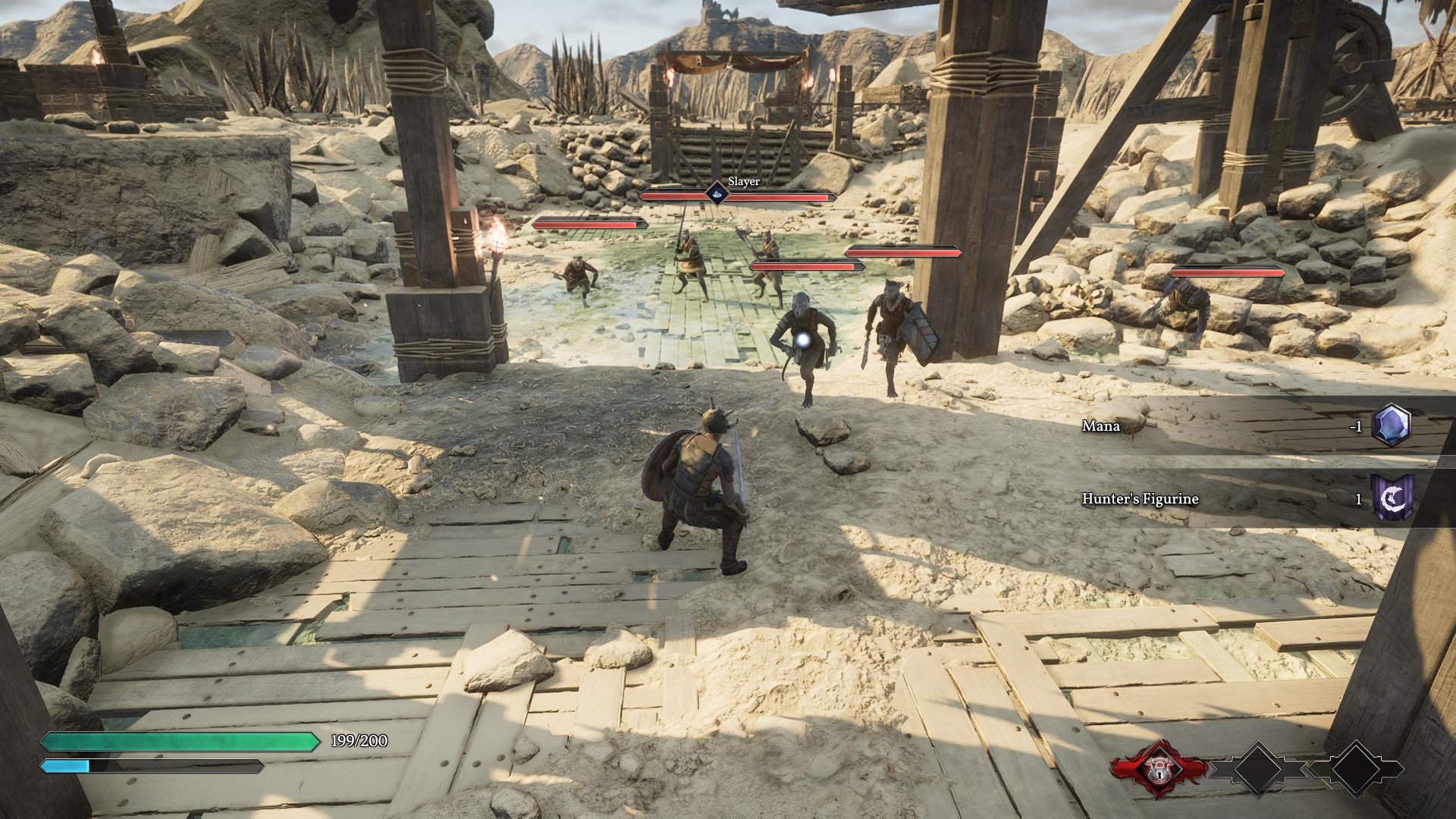
Need to know
What is it? Ambitious but underbaked blend of open-world RPG and roguelite
Expect to pay: £29.99
Release date: March 30, 2023
Developer: Systemic Reaction
Publisher: Systemic Reaction
Reviewed on: AMD Ryzen 5 3600, Nvidia RTX 2080 Super, 32GB RAM
Multiplayer? No
Link: Official site (opens in new tab)
My gut says Ravenbound took flight a little too early, flapping furiously with half-formed wings as it tailspins into mediocrity. Developed by Avalanche Studios offshoot Systemic Reaction, Ravenbound has the bones of a decent game—gorgeous environments, fast-paced combat, and a progression system that gives you just enough forward momentum to stop you from giving your monitor a flying lesson by tossing it out of the window. But that gorgeous world is also staid and lifeless, one that makes little effort to conceal its role as a mere backdrop for a punishing grind to power.
Ravenbound’s premise is explained in the game’s introductory cutscene, the mythic Scandinavian vibes of which are only slightly spoiled by the distractingly cockney voiceover. The island of Àvalt was watched over by six gods known as the Ellri. But one of those gods basically went off, like a bag of potatoes left in the cupboard for too long, covering the land in the sticky black goo of hatred. To fight the Betrayer, the five remaining gods channelled all their energy into creating a magical raven, which doesn’t seem like the most practical way for five gods to beat one other god, especially since the effort to do so makes them so weak that the Betrayer imprisons them inside mountain tombs for all eternity. Luckily, the magical raven escaped, and ever since has sought a worthy warrior to bind with and take the fight to the Betrayer.

That warrior is you. Or at least, it will be, once several dozen other Ravenbound have had their skulls ground to flour by Àvalt’s ferociously hostile inhabitants. Between you and the Betrayer are all manner of bandits, trolls, draugr, electrically charged mages, weird goblin-like critters, and other deadly foes. They all guard chests containing goodies you’ll need to bust the five remaining gods out from their sepulchral prisons, and they’ll all kill your Ravenbound within seconds if you’re anything but completely focussed on the task at hand.
Combat forms the bulk of Ravenbound’s play, and it’s best described in two words: hard and fast. Battles in Ravenbound are extremely kinetic. Enemies are relentless in their attacks, and you’ll rarely fight fewer than three at any given time, meaning you’re pretty much constantly evading their blades by a feather’s breadth. After completing the tutorial section, my first Ravenbound died the instant they wandered into their first bandit camp, as I simply wasn’t prepared for the force of the assault.
Surviving a fight requires judicious use of two abilities: dodging and blocking. The former is a sliding evasion manoeuvre that, if timed perfectly, will imbue your character with frenzy, giving them a minor damage boost. The latter protects your character in a large energy bubble that can withstand a few hits before breaking. Moreover, if you time a block so it activates just before an enemy attack hits, it will parry it, making you briefly invulnerable and often knocking enemies down.
Slip and slide
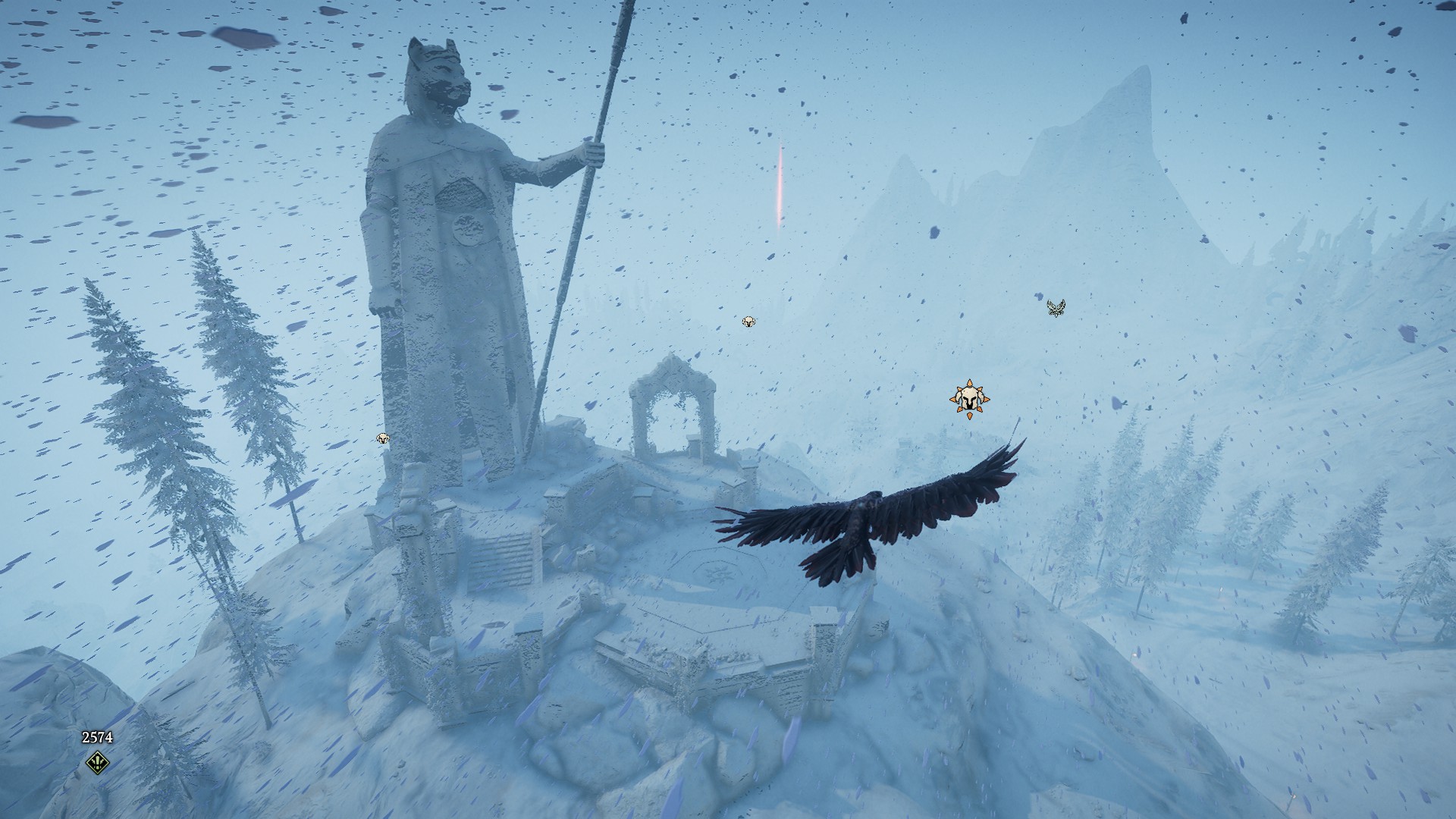
Is the combat well designed? I’m still not sure. The game relies heavily on outnumbering you to maintain the difficulty level, with the result that you spend a lot of time in encounters sliding around on your knees like Sam Gideon from Vanquish. Fights against certain enemies, like trios of draugr, and the goblin-like tuftir, require an absurd amount of evasion. The bubble-block also feels like a compromise deriving from budget. One of the base classes carries a roundshield they never actually use for blocking. Nonetheless, it does have a certain flair, and winning a fight in Ravenbound always got my blood pumping.
Your reward for clearing a Ravenbound camp is twofold. You’ll collect card fragments from fallen enemies, and get to unlock that chest your foes were guarding. Both lead to the same reward: the opportunity to select one of three cards from your warrior’s deck. These cards could improve your weapon or armour, or give you more specific status effects, like a 75% bonus to weapon damage, or a more resilient guard-bubble.
In this manner, your character becomes stronger with every enemy camp they clear. But two complications squat rudely on your power curve. First, cards require mana to use, a resource that appears semi-randomly in chests. Second, every opened chest and implemented upgrade increases your hatred level. Hatred increases your chance to draw a hatred card alongside your rewards. These automatically boost the HP and damage of bosses every subsequent time you upgrade. In short, the more upgrades you pursue, the harder the game gets.
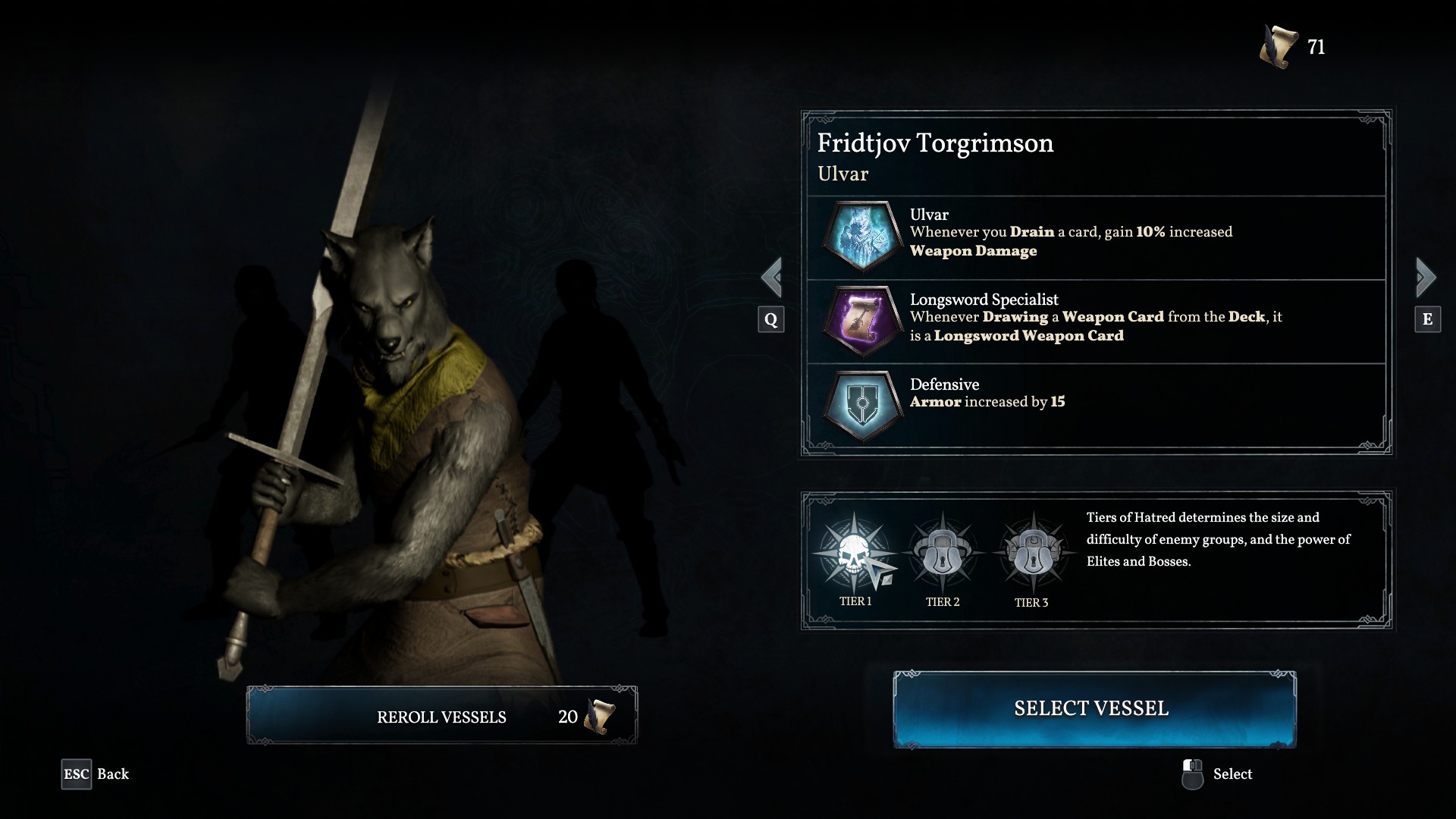
Hence, the first time you square off with one of the wardens guarding those godly prisons, you’ll likely get mulched. But that’s ok! As you explore, not only will you upgrade your character with existing cards, you’ll also unlock new ones as you complete certain challenges. When you die, those new cards are shuffled into your deck, increasing your chance to create a more powerful build with your next Ravenbound.
As a roguelite, Ravenbound functions well enough, although the system does produce a couple of issues. The randomised way mana appears, combined with the fact that more powerful mana cards have to be unlocked like all other upgrades, means early runs can really suck, as you struggle to accrue sufficient mana to purchase decent cards. More broadly, having to build your Ravenbound’s gear entirely from scratch every time does become wearying.
This is where the open world comes in, at least notionally. As I mentioned, you unlock new cards by completing challenges, which range from killing a new enemy type for the first time, to killing a certain number of enemies, to clearing multiple camps without taking any damage, and so forth. Because of this, it’s not always wise to go barrelling straight for the first boss, instead seeking out challenges to complete so you can bulk out your hand. Exploring can also increase that particular character’s legacy, a separate currency used to buy new character types like wolfmen and deer-men, new weapons like longswords and greataxes, and new status effects.
Ground down
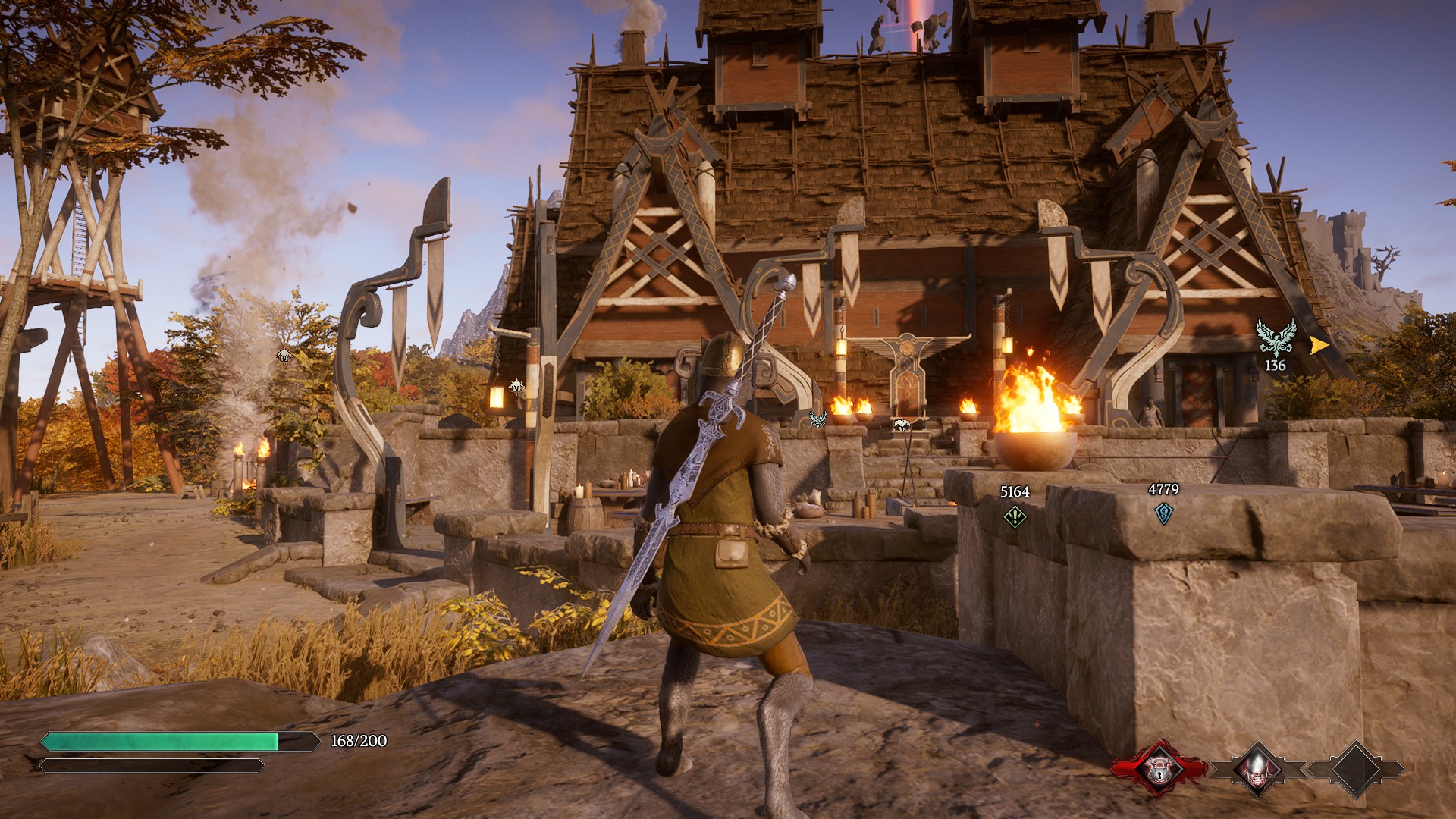
In this way, there’s an element of creating your own objectives to Ravenbound, which I appreciate. And when those objectives involve defeating a new type of enemy for the first time, they’re pretty fun. Most new cards, however, are unlocked through grinding, killing 50 or 100 enemies of a specific type, killing a certain number of enemies with a specific weapon type, or completing a specific tomb a set number of times.
The sense of grind is compounded by how arbitrary the open world feels. Àvalt is a huge space with multiple biomes including forest, autumnal forest, snowy forest, and desert (or as I call it ‘not forest’). You can travel virtually anywhere from the off, thanks to your character’s ability to transform into a raven and fly over the map.
But nearly all this real-estate is taken up solely by enemy camps, while everything else exists purely as window dressing. The many inviting ruins scattered across the map are empty of either treasures to plunder or narrative context to enrich the world. The elaborate settlements you’ll visit across your adventure contain a handful of basic vendors and precisely one quest giver. These quests always involve—you guessed it—clearing enemy camps. You just get a bit more money for it. Occasionally, you’ll come across an inscribed stone that provides a scrap of story, but as far as inviting exploration goes, that’s about it.
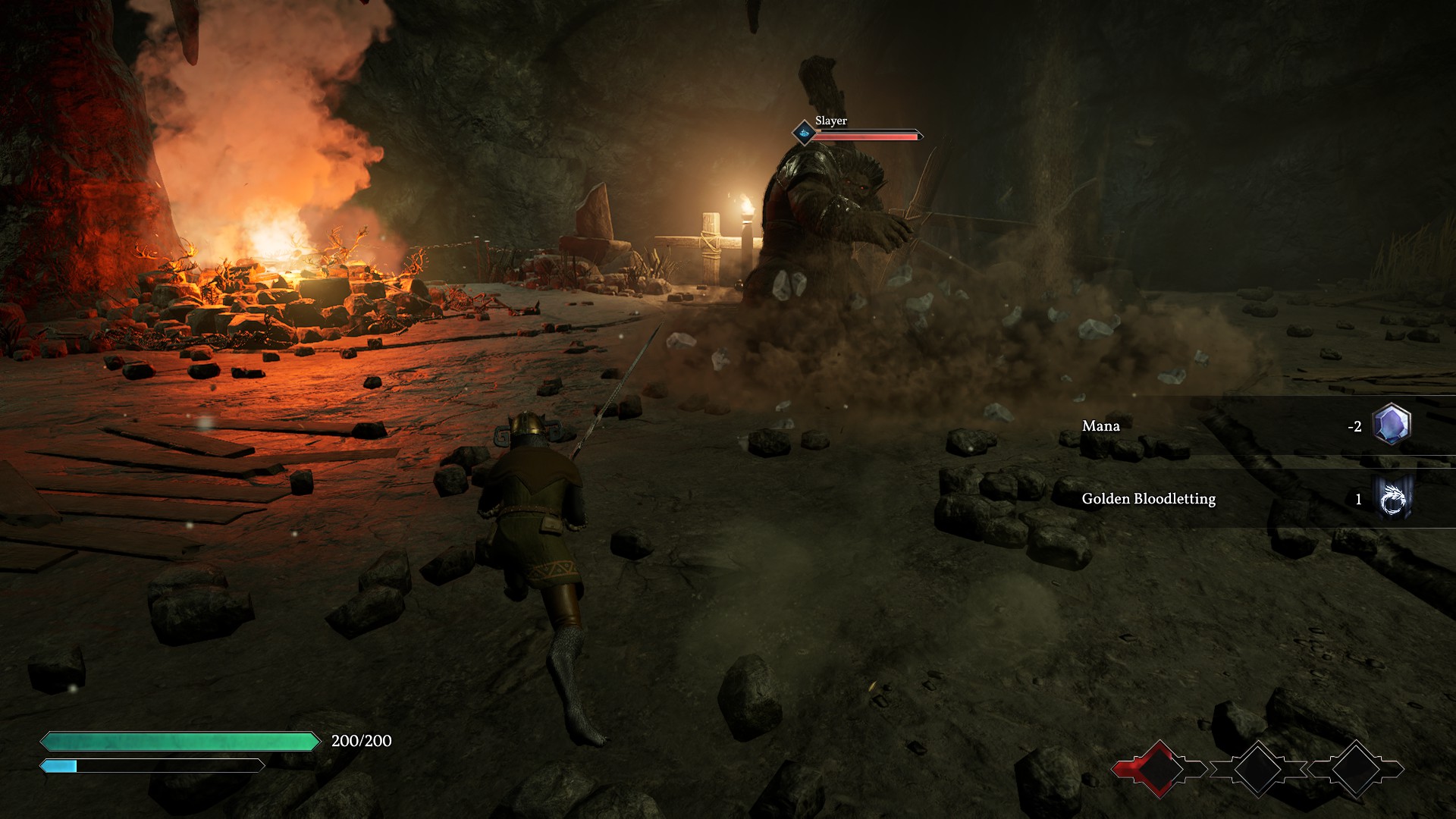
The sheer size of the world, combined with how functionally sparse it is, is what makes me wonder whether Ravenbound is flying from its roost in premature form. There are other indicators here. All the NPCs you encounter in settlements stand in the exact same default stance, with no attempt to make these areas feel like living places. The game also suffers from a substantial array of bugs, ranging from cosmetic issues like NPC models vanishing from settlements, to more significant problems like audio glitching out, or enemy health bars not depleting properly. While none of these are ideal, the latter two are a real pain to deal with in the middle of a boss fight, especially when death means resetting large amounts of progress.
All these issues are a shame, as there is potential here. The core of the combat is entertaining, especially on those rare occasions when you absolutely beast a camp. The roguelite system seems intelligently put together, and unlocking new cards is always gratifying. And while it may feel inert, the open world can be beautiful. I particularly like the mountain regions, with snow falling from the sky in fat, heavy chunks that effectively communicates the coldness in this environment.
Nonetheless, I don’t think I could recommend Ravenbound. The attempt to mesh open-world gaming with a roguelite structure is admirable, but the emptiness of the former undermines the potential of the latter, resulting in a combat system spread too thinly across a canvas that’s too large.




